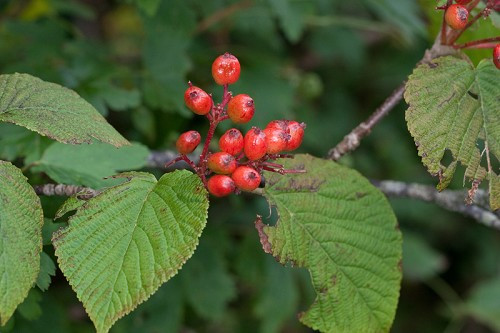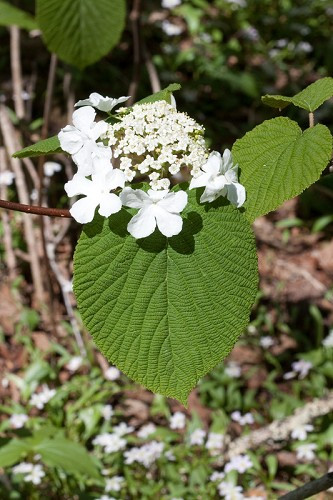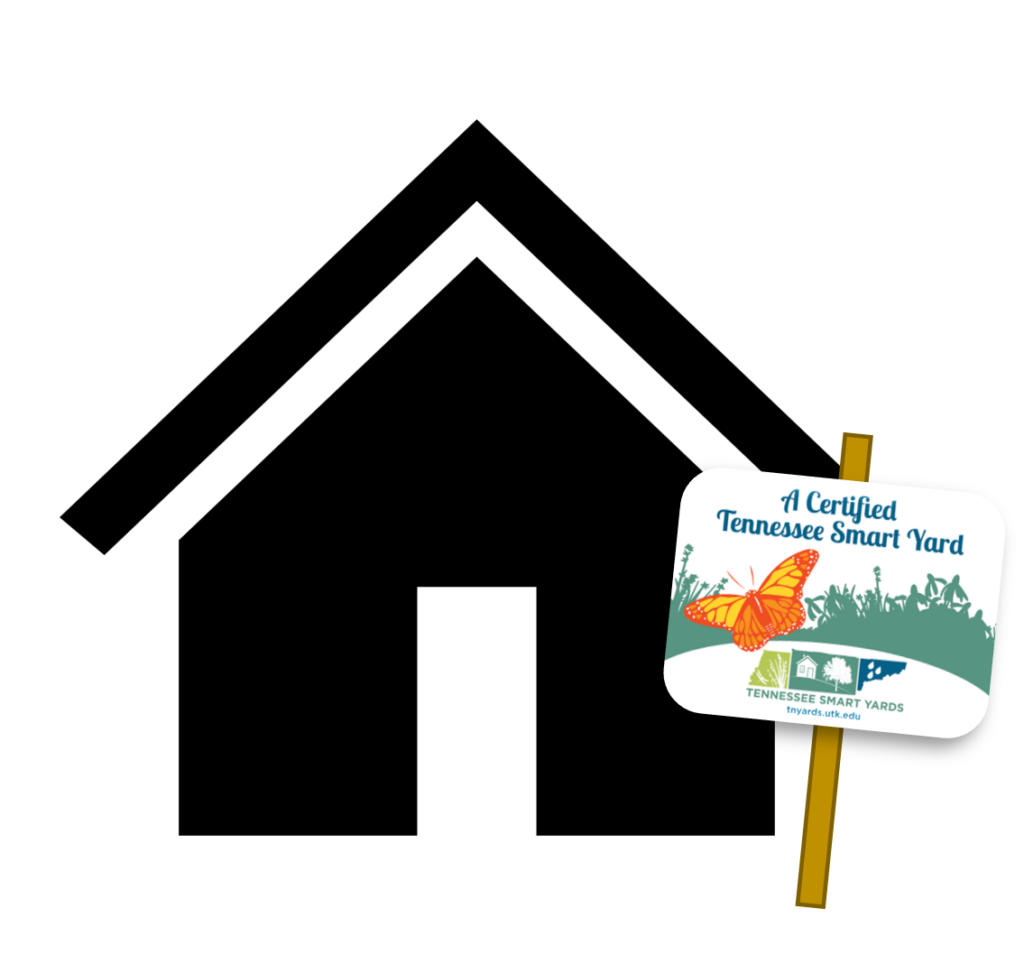
Common Name: Hobblebush Viburnum
Part to full shade; medium to moderately dry moisture level; grows in rock outcroppings, gravelly and sandy loams, loams and silt loams; strongly acid to slightly acid pH.
3-10 feet height by 4-12 feet spread; blooms in spring; creamy white flowers; elliptic, purple-black berries in broad, umbrella-like clusters in August to September.
Growth Rate: Medium
Maintenance: Occasional disease and insect problems. All viburnums benefit from a thinning or hard pruning in late winter to remove older stems.
Propagation: Moderately difficult from seed
Native Region: Only in Ridge and Valley Province
Open, loose and sprawling deciduous shrub. Showiest viburnum in flower but does not have the attractive symmetry of other viburnums. Fruit is sweet and edible for humans, and leaves have beautiful fall color. Branches form striking horizontal silhouettes in winter. Full sun and moisture will assure heavy fruit projection; shade and drought will reduce fruiting and can reduce fruit production to every 2-3 years. Probably needs two plants to encourage cross-pollination and heavy fruiting. Needs a moist, cool soil to perform well. Roots often develop where the outer branches touch the ground, leading to somewhat tangled colonies that can trip people who walk by, hence the common name. Occurs naturally in rich, moist woods, streambanks, and swamps. Attracts birds, mammals, and butterflies. Limited number of cultivars available but difficult to find.

